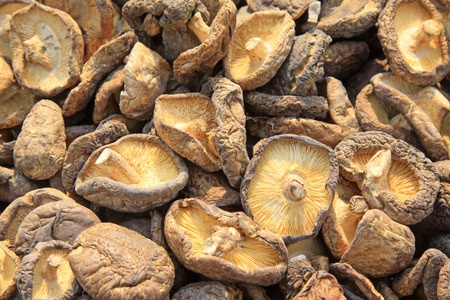
L-ergothioneine (ERT, 2-thiol-l-histidine-betaine) is an unusual bioactive compound, a sulphur based amino acids found in food. The biological function of this hydrophilic low-molecular-weight thiol is not known fully even though it has widespread presence in products such as mushrooms and associated fermented foods. It has also been found in milk at low levels. It is marketed as a longevity nutraceutical.
It was discovered in ergot mould in 1909.
ERT is exclusively synthesized in a few organisms such as fungi – edible mushrooms (Paul and Snyder, 2010), mycobacteria (Ey et al., 2007), and cyanobacteria (Pfeiffer et al., 2001). In mammals, only ingestion is possible as it is not naturally synthesised. It localises in the mitochondria and cells and tissues normally exposed to oxidative stress and involved in the inflammatory response process (Paul and Snyder 2010; Gründemann 2012).
Benefits and issues are associated with L-ergothioneine in food.
The benefits: it has a wide range of physiological functions, related to its antioxidant and scavenging activities (Aruoma et al., 1999; Paul and Snyder 2010). The issues: it can impact human health at the genetic level. A few case-control studies suggest an association between gene polymorphisms in the ERT organic cation transporter gene, SLC22A4 and susceptibility to a variety of chronic inflammatory diseases (Tokuhiro et al., 2003; Peltekova et al., 2004; Waller et al., 2006; Santiago et al., 2006).
Suppliers
Blue California obtained GRAS status for their fermented version in 2019.
Article updated November 18th 2025 to include new information on its properties..
References
Aruoma, O.I., Spencer, J.P.E., Mahmood, N. (1999) Protection against oxidative damage and cell death by the natural antioxidant ergothioneine. Food Chem Toxicol 37 pp. 1043–53.
Ey, J., Schömig, E., Taubert, D. (2007) Dietary sources and antioxidant effects of ergothioneine. J. Agric Food Chem. 55 pp. 6466–74.
Grűndemann, D. (2012) The ergothioneine transporter controls and indicates ergothioneine activity—a review. Prev Med. 54:S71–4.
Paul, B.D., Snyder, S.H. (2010) The unusual amino acid L-ergothioneine is a physiologic cytoprotectant. Cell Death Differ. 17 pp. 1134–40.
Peltekova, V.D., Wintle, R.F., Rubin, L.A., Amos, C.I., Huang, Q., Gu, X., Newman, B., van Oene, M., Cescon, D., Greenberg, G., Griffiths, A.M., St George-Hyslop, P.H., Siminovitch K,A. (2004) Functional variants of OCTN cation transporter genes are associated with Crohn disease. Nat. Genet. 36 pp. 471–5.
Pfeiffer, C., Bauer, T., Surek, B., Schömig, E., Grűndemann, D. (2001) Cyanobacteria produce high levels of ergothioneine. Food Chem. 129 pp. 1766–9.
Santiago, J.L., Martínez, A., de la Calle, H., Fernández-Arquero, M., Figueredo, M.A., de la Concha, E.G., Urcelay, E. (2006) Evidence for the association of the SLC22A4 and SLC22A5 genes with type 1 diabetes: a case control study. BMC Med Genet 23 pp. 54–59.
Tokuhiro, S., Yamada, R., Chan, X., Suzuki, A., Kochi, Y., Sawada, T., Suzuki, M., Nagasaki, M., Ohtsuki, M., Ono, M., Furukawa, H., Nagashima, M., Yoshino, S., Mabuchi, A., Sekine, A., Saito, S., Takahashi, A, Tsunoda T, Nakamura Y, Yamamoto K. 2003. An intronic SNP in a RUNX1 binding site of SLC22A4, encoding an organic cation transporter, is associated with rheumatoid arthritis. Nat. Genet. 35 pp. 341–8.
Waller, S., Tremelling, M., Bredin, F., Godfrey, L., Howson, J., Parkes, M. (2006) Evidence for association of OCTN genes and IBD5 with ulcerative colitis. Gut 55 pp. 809–14.


Leave a Reply